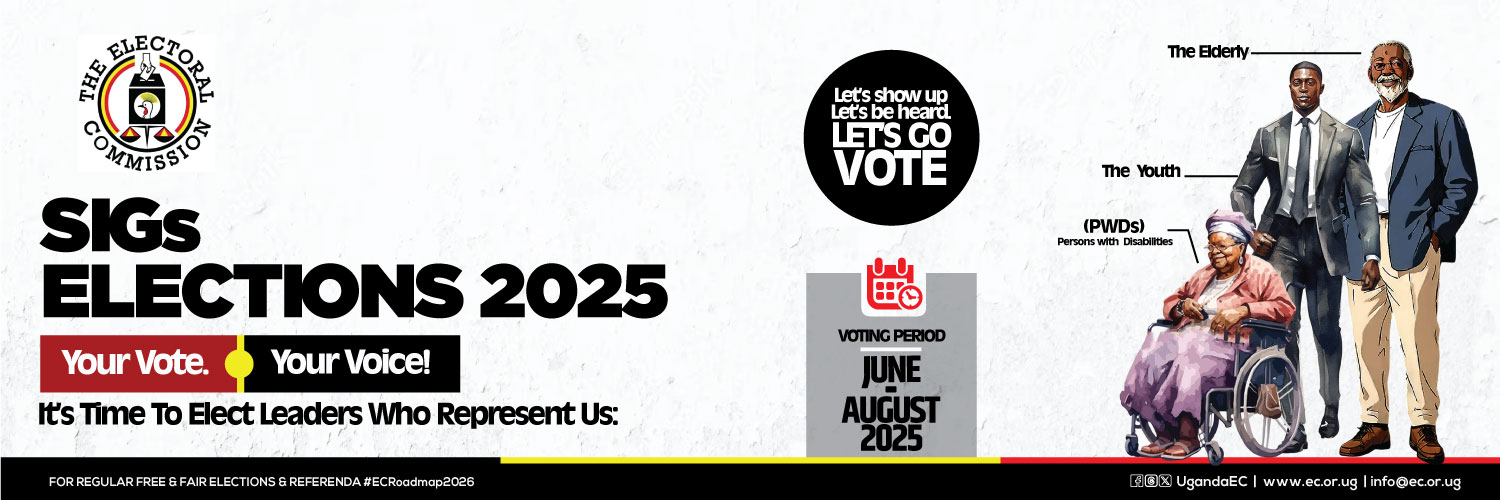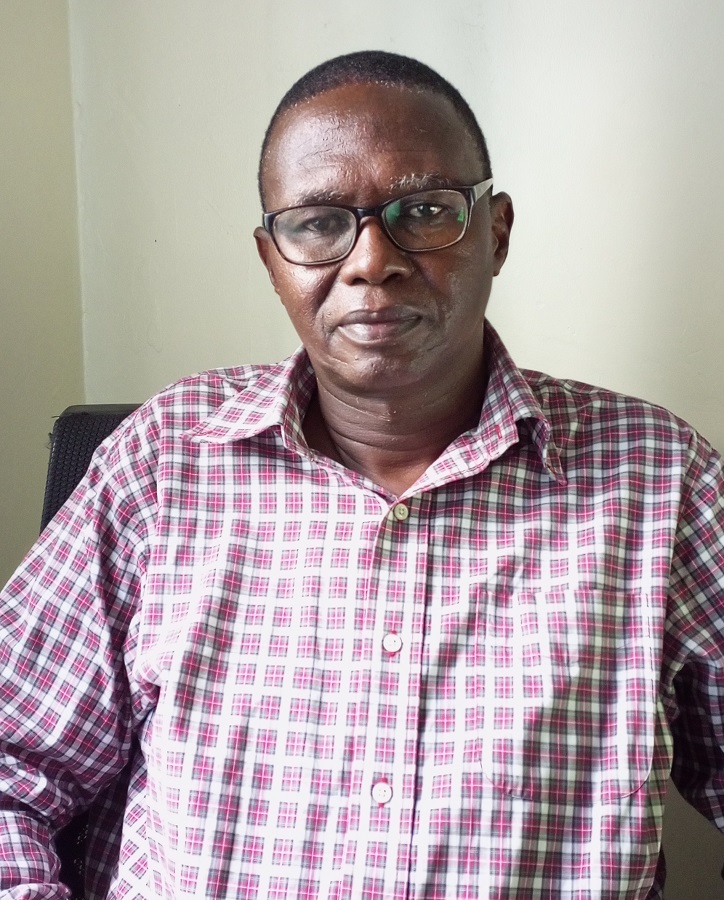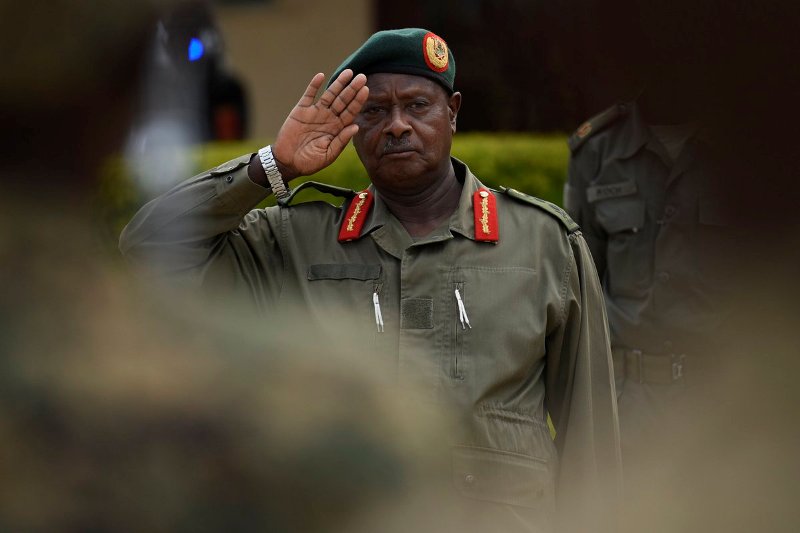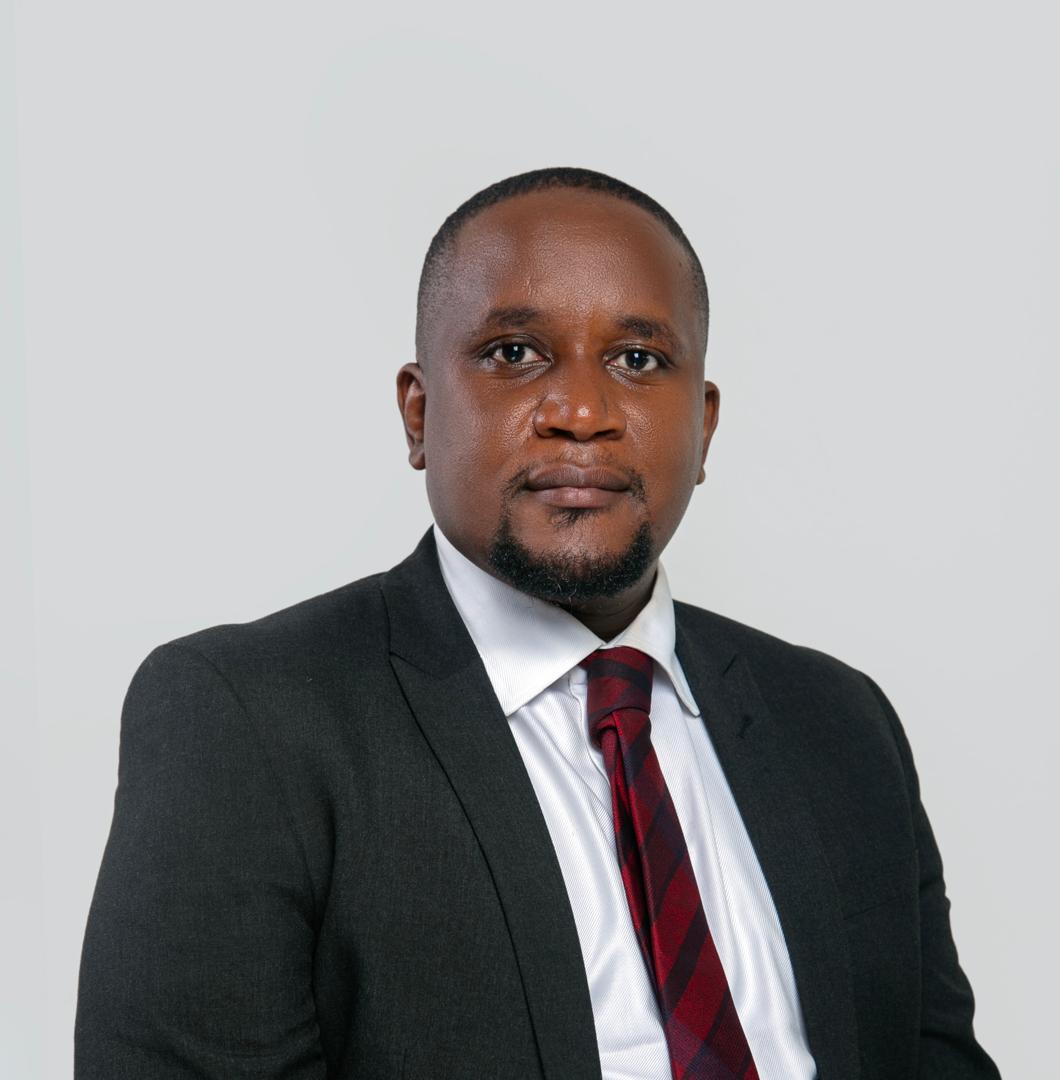Is Uganda rendering the east African standby force a white elephant project?
The cardinal question is: Why did Uganda pre-empt or exclude EASF from the current South Sudan Conflict? The other question is: With its unilateral decisions to deploy troops in hotspots of conflict in East Africa, isn’t Uganda rendering EASF a white elephant project?
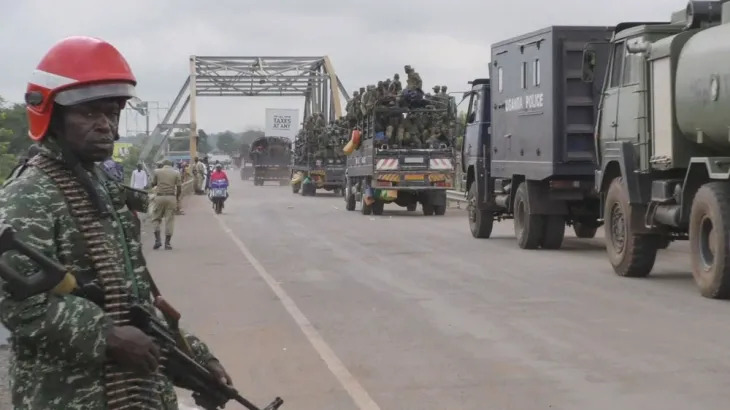
By Oweyegha-Afunaduula
A “white elephant project” is a metaphor for a possession, project, or venture that is expensive to maintain or acquire but yields little or no practical value or benefit, essentially a costly burden. White elephant projects are generally initiated with great enthusiasm and expectations. However, due to reasons such as poor planning, lack of demand, lack of wisdom, cost overruns, or corruption, these projects end up becoming financial burdens with little or no utility benefit or profitability.
This particular article is seeking to prove that the East African Standby Force (EASF) may emerge as a white elephant project, particularly due to Uganda’s military belligerence in Eastern Africa and the Great Lakes region..
There was a time when East Africa was much securer than it is today. That was the time when the region consisted of only three countries: Kenya, Tanzania and Uganda. There was no need for EASF because the peoples of the region were interacting far more freely than they are today.
We had a similar currency and similar common services under organisations mutually agreed to be erected such as East African Airways Corporation, East African Habours Corporation and East African Railways Corporation. They were all run by a functional East African Community with its Headquarters in Arusha, Tanzania. East African workers would work anywhere in the region with no fear of their peace and security being antagonised. For me I worked in the East African Marine Fisheries Research Organisation (EAMFRO) based in Zanzibar and Dr. John Balirwa worked in the East African Fresh Water Fisheries Organisation (EAMFRO) based in Jinja, Uganda. We were proud members of the East African Community as were others working in the various organisations of the community ina tranquil regional working environment.
Today there is another East African Community much bigger but far less secure and less peaceful than the defunct East African Community we worked in and for. The members are Burundi, Democratic Republic of Congo (DRC) Kenya, Rwanda, Somalia, South Sudan, Tanzania and Uganda. Political actors want it to be even bigger, ostensibly to create a large economic block. The most enthusiastic about a large economic block is President Tibuhaburwa Museveni of Uganda. However, the greatest threat to the existence of the East African Community as a peaceful, secure and productive community in which the peoples interact amicably and respect themselves is the military belligerence of Rwanda and Uganda. The two countries are under the political and military domination and control of rulers who belong to the small Tutsi ethnicity, and who believe that might is right.
Currently both Rwanda and Uganda are militarily active in the DRC. They have been accused of supporting the rebellion of immigrants of Tutsi ethnicity called Banyamulenge because they are located mainly in an area of the DRC called Mulenge. The rebels have organised their violence under a guerilla group called M23.
According to reliable sources they get their modern weapons from Rwanda and Uganda, whose soldiers are also said to be part of the rebel group, just like the Rwandese refugees in Uganda joined the National Resistance Movement/Army and emerged from it as Rwandese Patriotic Front/Army, subsequently capturing the instruments of power in Kigali, Rwanda. Uganda’s army is in South Sudan, ostensibly to secure the country against rebels, but more, to secure the President of that country’s power against his former Vice-President. The other members of the East African Community do not approve of Rwanda’s and Uganda’s military belligerence in the DRC and Uganda’s military belligerence in South Sudan.
Military belligerence refers to a state of hostility or actively engaging in armed conflict, encompassing both the actions of a country’s armed forces and the broader political and strategic context of such actions.
East African Standby Force
There is what is called the “East African Standby Force EASF), which was formed to ensure peace and security in any of the member States of the East African Community in case there was threat to peace and security that was bound to affect the East African region. The EASF was established in 2007 and reached full operational capability (FOC) in December 2015, a year before schedule. The EASF is one of the five regional standby brigades as part of the African Standby Force (ASF) and has a broad-ranging membership in terms of geographic location. It has 10 active member states: Burundi, Comoros, Djibouti, Ethiopia, Kenya, Rwanda, Seychelles, Somalia, Sudan, and Uganda. Tanzania is not part of it.
The lack of a dedicated home continues to form a challenge for the commitment and relevance of the EASF.Also, the lack of appreciation of the EASF and its achievements so far links back to the issues of a broader or more narrow interpretation of the EASF agenda. The EASF Secretariat feels insufficiently consulted by the African Union, and some members of the EASF Secretariat have also lamented the lack of investment and strategic thinking on behalf of the EASF Member States. While the AU confirms that the EASF is part and parcel of the African Standby Force, it has not sufficiently taken its 13 responsibilities to truly achieve the necessary cooperation. By supporting and funding too many organisations, donors contribute to the fragmentation of a patchwork of peace and security organisations in Eastern Africa. The new 2014 Agreement pledged to establish an EASF Peace Fund to finance the deployment of peace support operations, with funds to be generated from a variety of sources, including amongst others 12% of the annual budget, voluntary contributions, and external sources such as the EU’s African Peace Facility (APF).
Donor’s interest in EASF has diminished due to lack of strategic thinking and engagement by EASF donors. While there were no clear political objectives from any of the EASF member states, the military pillar of the EASF and its activities has received more attention as opposed to the civilian and police elements. Fortunately, most member states are paying their contributions to the EASF. Ethiopia, Kenya and Uganda contribute most to the EASF budget and are perceived as having the most influence in the policy organs’ meetings and capacity. Rwanda and Burundi are the two states from Central Africa that decided to join the EASF, and both have pledged several battalions and equipment. Somalia, Sudan and Djibouti are the three states from the Horn of Africa, and provide smaller contributors. Lastly, the Seychelles and Comoros are the two island states that have sought to gain more access to mainland security structures through joining the EASF. Sudan has not paid its contributions since 2013, when South Sudan became independent.
Apparently, South Sudan participated in the EASF operations in DRC in 2024 (Radio Tamazuj, 2024). In December 2024, South Sudan’s President Salva Kiir Mayardit flagged off a battalion of 750 soldiers to the Democratic Republic of Congo (DRC).
For a long time, however, EASF was dormant (Wambui, 2024). In fact, Edmund Kagire (2018) reported in the East African Standard that the EASF hang in the balance. However, the African Defense Force (ADF) reported in February 2024 that EASF was ready to begin resolving conflicts in Eastern Africa (ADF, 2024). Even the East African Standard in September 2024 reported that the EASF was ready to deploy in South Sudan (Fred Oluoch, 2024). It, therefore, came as a surprise that instead of EASF deploying in South Sudan it was Uganda, which deployed its UPDF in March 2025. It was even more surprising because EASF and Uganda had just signed an MOU in August 2024to enhance Early Warning and Response Capabilities (UBC, 2024). Because Uganda is one of the three most consistent contributors to the EASF Fund, one would have expected the Government of Uganda to encourage EASF to deploy in South Sudanso that UPDF just enhances early warning and response capabilities of the EASF in keeping with the MOU Uganda signed with EASF. Instead, however, the Chief of Defense Forces (CDF), General Muhoozi Kainerugaba, rushed to deploy a UPDF contingent in South Sudan without seeking the approval of the Parliament of Uganda first. Perhaps he wanted to follow in the footsteps of his father, President Tibuhaburwa Museveni, who has been deploying the UPDF to countries such as Somalia, DRC, Central African Republic (CAR) and Equatorial Guinea without Parliamentary approval and then getting the approval retrospectively at very high cost to the Ugandan taxpayers.
Uganda Peoples Defense Forces in South Sudan Power Conflict
The whole world in general and Ugandans in particular now know that President Tibuhaburwa Museveni has ceded the power of deploying Ugandan troops to his CDF. As I mentioned above the CDF deployed the UPDF to resolve power conflicts between President Kiir and Vice-President Machar. According to the CDF “UPDF Commandos arrived in Juba to support South Sudan People’s Defence Forces (SSPDF) in the current crisis”. If I remember well, he mentioned he sent the troops to secure President Kiir against Machar.
Kiir belongs to the Dinka, the largest ethnic group in South Sudan, while Machar is from the Nuer, the second-largest ethnic group. The Dinka represent around 35% of the population. The Nuer are around 16%. But there are many other small ethnic groups (The Independent, 2025). There is no love left between the Dinka and the Nuer because of their divergent cultures. Dinka people, like the Tutsi and Hima, are known for being proud cattle keepers, and cattle are a central part of their culture and economy in South Sudan. Apparently, even the Nuer people are known as cattle keepers, with their lives and culture deeply intertwined with their cattle wealth and the role of cattle in their economic and social systems.
Both the Dinka and Nuer are power hungry and militaristic.After Nuer boys undergo an initiation ceremony, they are given the responsibility of protecting their family’s cattle herd, which can involve participating in “blood feuds,” inter-communal wars, and revenge attacks, suggesting a militaristic culture. The Dinka initiation ceremony, a vital coming-of-age custom, marks the transition from boyhood to manhood and includes rituals like scarification, lessons from elders, and traditional dances, often involving boys aged 14-21. Therefore, the Dinka are less militaristic than the Nuer culturally.
In 1999 the Nuer formed their own South Sudan Liberation Movement/Army (SSLM) although they initially belonged Dr John Garang’s Sudanese People’s LiberationMovement/Army (SPLM/A).However, SPLA was an Ethnic Dinka Army. This could have moved the Nuer to form their own politico-military movement. Thus South Sudan is politically and militarily polarised along Dinka-Nuer axis, which makes the country ever prone to politicomilitary conflict.
Andrew Mwenda’s The Independent said it was wrong to send Ugandan troops to South Sudan. Many critical analysts are united inconcluding that because UPDF is not impartial in the South Sudan conflict, it will just catalyse and escalate it. World Without War’s Director, Edward H. Carpenter, condemned the use of chemicals by UPDF in Sudan., saying “This is not just an escalation. It is a potential war crime”. Indeed, in any war situation, civilians are killed, raped and abused, and in some cases, genocide is carried out. According to Garang Malak (2025), writing in the East African Standard of 25 March 2025, instead of ensuring peace and security, Ugandan troops in South Sudan are causing controversy and rifts between South Sudanese government coalition partners because Uganda is not impartial.
What could escalate the conflict is General Muhoozi Kainerugaba’s series of posts on X. He wrote that “as of two days ago, our Special Forces units entered Juba to secure it”. “We the UPDF (Ugandan military), only recognise one President of South Sudan, H.E. Salva Kiir … Any move against him is a declaration of war against Uganda! All those who commit that crime will learn what it means!” The existence of EASF was ignored. It was not even clear whether EASF contributed any money to the current UPDF’s military efforts in South Sudan.
It is not the first time Uganda has deployed UPDF in South Sudan. The Government of Ugandan deployed the Ugandan People’s Defense Forces (UPDF) in South Sudan shortly after the outbreak of the third civil war on 15 December 2013. The intervention was instrumental in hindering further escalation of violence during the first weeks of the conflict (Øystein Rolandsen, Fanny Nicolaisen andTove Heggli Sagmo 2015). Uganda ignored the existence of the East African Standby Force.
There is no doubt South Sudan is a key element in the strategy to maintain Uganda’s dominant position in the Great Lakes region. To keep Salva Kiir in power in Juba and thereby controlling the outcome – or lack of such – of negotiations to end the civil war has been a way to maintain South Sudan as a sphere of influence. But as South Sudan’s economy is rapidly disintegrating and as Salva’s power base shrinks, the political cost of this strategy is rising (Øystein Rolandsen, Fanny Nicolaisen andTove Heggli Sagmo 2015). However, it is also known that some big people in power in Uganda have business interests in South Sudan to secure.
There is growing concern among right thinking Ugandans regarding the escalating financial cost to the taxpayers and diversion of money from social and other types of development. Every time troops are sent to South Sudan it is without parliamentary approval. Then funds are demanded retrospectively. It is not easy to establish how the figures requested are arrived at. For example, on 28 March 2025 the Parliament of Uganda retrospectively approved 39.1 billion for UPDF operations in the Sudan (Bagala, 2025). Accounting in war situations is next to impossible. One school of thought argues that much of the money allocated to war ends up on bank accounts of the military chiefs.
According to experts, a rise in political tensions in South Sudan and an escalation of violence in the Upper Nile State have raised fears of a return to civil war in the world’s youngest nation (The Independent, 2025). The UPDF is now integral to the South Sudan conflict involving President Kiir and Vice President Machar. Apparently, UPDF has been accused of waging chemical warfare in South Sudan (Javira Ssebwami, 2025) although the UPDF commanders in the country have denied it.
The cardinal question is: Why did Uganda pre-empt or exclude EASF from the current South Sudan Conflict? The other question is: With its unilateral decisions to deploy troops in hotspots of conflict in East Africa, isn’t Uganda rendering EASF a white elephant project?
Further Reading
ADF (2024). East African Standby Force ready to resolve conflicts, Leadership says. ADF Magazine, February 2024, https://adf-magazine.com/2024/02/eastern-africa-standby-force-ready-to-resolve-conflicts-leadership-says/ Visited on 28 March 2025 at 13:46 pm EAT.
Andrew Bagala (2025). South Sudan’s VP says Uganda is violating Arms Embargo. Daily Monitor, March 25 2025. https://www.monitor.co.ug/uganda/news/national/south-sudan-s-vp-machar-says-uganda-is-violating-arms-embargo-4978374 Visited on 28 March 2025 at 14:30 pm EAT
Edmund Kagire (2018). East African Standby Force hangs in the balance. East African Standard, August 4 2018, https://www.theeastafrican.co.ke/tea/news/east-africa/east-africa-standby-force-hangs-in-the-balance-1399766 Visited on 28 March 2025 at 13:41 pm EAT
Elizabeth Kamurungi (2024). From Tristar to Atiak Sugar: A Puzzle of White Elephant Govt Projects. Daily Monitor, November 04 2024 https://www.monitor.co.ug/uganda/special-reports/from-tristar-to-atiak-sugar-a-puzzle-of-white-elephant-govt-projects-4811110#story, Visited on 29 March 2025 at 12>02 pm EAT.
Fred Oluoch (2024). Eastern Africa Standby Force ready to deploy to South Sudan. East African Standard, September, 22 2024 https://www.theeastafrican.co.ke/tea/news/east-africa/eastern-african-standby-force-ready-to-deploy-to-south-sudan-1403058 Visited on 28 March 2025 at 14:o4 pm EAT.
Garang Malak (2025). Why Ugandan Troops are causing controversy in South Sudan. The East African Standard, March 25 2025. https://www.theeastafrican.co.ke/tea/news/east-africa/why-ugandan-troops-are-causing-controversy-in-south-sudan-4979022 Visited on 29 March 2025 at 10:30 am EAT.
Javira Ssebwami (2025). UPDF denies using chemical weapons in South Sudan. PML Daily, March 28 2025. https://www.pmldaily.com/news/2025/03/updf-denies-using-chemical-weapons-in-south-sudan.html Visited on 28 March 2025 at 15:02 pm EAT.
Radio Tamazuj (2022). South Sudan sends off troops joining EAC Standby Force in DRC. Radio Tamazuj December 28 2024 https://www.radiotamazuj.org/en/news/article/south-sudan-sends-off-troops-joining-eac-standby-force-in-drc Visited on 28 March 2025 at 14:14 pm EAT
Mary Wambui (2024). Once Dormant, the East African Standby Force is ready to deploy. East African Standard, January 26 2024 https://www.theeastafrican.co.ke/tea/news/east-africa/once-dormant-east-africa-standby-force-ready-to-deploy-4504116#google_vignette Visited on 28 March 2025 at 13:34 pm EAT.
New Memorandum of Understanding: Agreement on Establishment of EASF, June 2014 http://www.easfcom.org/images/documents/2016/easf_key_documents/Agreement_on_Establishment _of_EASF_Fin.pdf.
NTV (2025). UPDF requests UGX 39.1 billion for South Sudan peacekeeping operation. NTV, 28 March 2025,https://www.ntv.co.ug/ug/news/national/updf-requests-ugx-39-1-billion-for-south-sudan-peacekeeping-operation-4981734 Visited on 28 March 2025 at 14:27 pm EAT.
Øystein Rolandsen, Fanny Nicolaisen andTove Heggli Sagmo (2015). The Cost of Uganda’s Military Intervention in South Sudan. PRIO, May 29 2015.
Parliament of Uganda (2025). Parliament of Uganda approves UPDF deployment in South Sudan, March 21 2025 https://www.parliament.go.ug/news/3645/parliament-approves-updf-deployment-south-sudan Visited on 28 March 2025 at 14:23 pm EAT
Sophie Desmidt and Volker Hauck (2017). Understanding the East African Standby Force: A regional mechanism without political home. ECDPM, https://ecdpm.org/application/files/3716/6135/3498/EASF-Background-Paper-PEDRO-Political-Economy-Dynamics-Regional-Organisations-Africa-ECDPM-2017.pdf Visited on 28 March 2025 at 13:05 pm EAT.
The Independent (2025). UPDF wrong on South Sudan Deployment. The Independent, March 23 025, https://www.independent.co.ug/cover-story-updf-wrong-on-south-sudan-deployment/ Visited on 28 March 2025 at 14:44 pm EAT
Uganda Broadcasting Corporation (2024). Uganda and East African Standby Force Sign MOU to enhance Early Warning and Response Capabilities. UBC, August 22 2024. https://ubc.go.ug/2024/08/22/uganda-and-eastern-africa-standby-force-sign-mou-to-enhance-early-warning-and-response-capabilities/ Visited on 28 March 2025 at 13:58 pm EAT.
GlobeNewswire (2025). Chemical Weapons attack in South Sudan condemned by World without War. World Without War, March 24 2025. https://www.globenewswire.com/news-release/2025/03/24/3048082/0/en/Chemical-Weapons-Attack-in-South-Sudan-Condemned-by-World-Without-War.html Visited on 28 March 2025 at 15:08 pm EAT.


